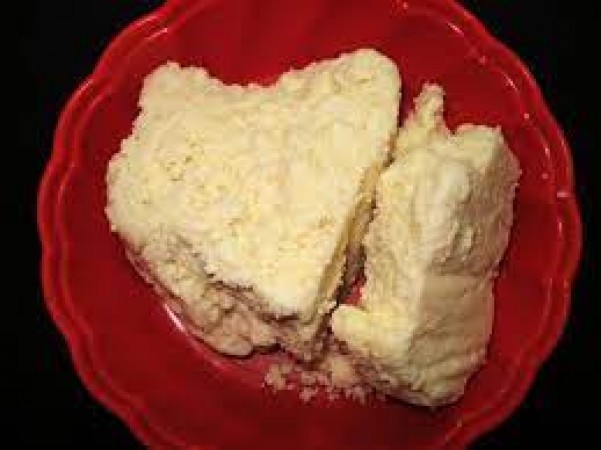
Diwali, the festival of lights, is a time of joy, unity, and the exchange of delightful sweets. However, in recent years, there has been a growing concern about the presence of colorful sweets in the market that not only lack authenticity but can also pose serious health risks. In this comprehensive guide, we will help you understand the difference between real and fake Diwali sweets, ensuring that your celebrations remain safe, enjoyable, and filled with the genuine sweetness of this beloved festival.
As Diwali approaches, the market is inundated with an array of sweets, but it's essential to be aware of the hidden dangers that can lurk beneath the colorful exteriors of some of these treats. Fake sweets are not only lacking in the authentic taste that makes Diwali special but can also contain harmful chemicals and low-quality ingredients that can be detrimental to your health.
The proliferation of these counterfeit sweets is a growing concern for both consumers and authorities. Their sale and consumption can have grave health implications, making it crucial to be vigilant when selecting your Diwali sweets.
Consuming fake sweets can have severe consequences for your health. These counterfeit treats are often prepared in unhygienic conditions, leading to food poisoning, gastrointestinal distress, and sometimes even severe allergies. In the worst cases, these synthetic sweets can result in long-term health problems, putting the well-being of individuals and communities at risk.
The alarming increase in the prevalence of fake sweets during the festive season has raised concerns among health officials and consumers alike. The demand for sweets during Diwali creates an opportunity for unscrupulous traders to flood the market with counterfeit products, making it essential for everyone to stay informed and take the necessary precautions.
One of the most effective ways to ensure the authenticity of your Diwali sweets is to purchase them from well-established, reputable shops, or renowned sweet brands with a history of delivering quality. Such sources are more likely to maintain strict quality control and adhere to food safety standards.
A careful examination of the packaging can reveal a lot about the authenticity of the sweets. Look for legitimate branding, certifications, and manufacturing and expiry dates. Reliable manufacturers ensure their products are properly labeled, and counterfeiters may not be as diligent in replicating these details.
Real Diwali sweets are usually made using traditional recipes that have been passed down through generations. These recipes use natural and high-quality ingredients to create the delightful flavors and textures that we associate with this festival. Genuine sweets are a labor of love and tradition, while fake sweets are often hastily produced with little regard for quality.
Real Diwali sweets possess a distinctive texture and aroma that fake ones often lack. When you visit a sweet shop, take a moment to savor the enticing scents and textures of the sweets on display. Authentic sweets are crafted with care and attention to detail, resulting in a sensory experience that sets them apart from their counterfeit counterparts.
While we all love a good deal, be cautious of sweets that are excessively cheap. Quality ingredients come at a cost, and sweets that are significantly cheaper than the market average should raise red flags. Remember that counterfeit sweets are often produced with inexpensive and inferior ingredients.
Fake sweets often sport excessively vibrant and unnatural colors. Authentic Diwali sweets typically have natural hues derived from the ingredients used, while counterfeit sweets may use artificial dyes to achieve eye-catching but unhealthy colors. Trust your instincts if the colors seem too bright to be true.
Counterfeiters may not pay attention to the finer details, and their packaging may exhibit signs of poor quality. Look out for spelling errors, inconsistent branding, or packaging that seems hastily put together. Legitimate manufacturers take pride in their packaging, and any flaws could indicate a lack of authenticity.
When you purchase Diwali sweets, pay attention to the consistency of their shapes and sizes. Real sweets are typically made with precision and care, resulting in uniform shapes and sizes. In contrast, fake sweets may vary significantly in appearance, showing signs of mass production without attention to detail.
One surefire way to guarantee the authenticity and quality of your Diwali sweets is to make them at home or purchase them from known sources. Homemade sweets allow you to control the ingredients and quality, ensuring that your family and friends enjoy a safe and delicious treat.
It's essential to spread awareness about identifying fake sweets. Talk to your friends and family, share this information on social media, and engage in conversations about the importance of buying authentic Diwali sweets. The more people are informed, the safer our communities will be.
If you come across counterfeit sweets being sold in your area, don't hesitate to report it to local authorities. Your vigilance can protect your community from the health risks associated with fake sweets and discourage the sale of these harmful products. Diwali is a time for joy, togetherness, and indulging in delicious sweets. By being vigilant and well-informed, you can safeguard your health and ensure that your Diwali sweets bring happiness and not harm. Choose wisely, trust your instincts, and enjoy a safe and delightful celebration of the Festival of Lights.
Perseverance in the Face of Persecution: Atrocities Against the Jews
Ending Time of the Last Lunar Eclipse of the Year on October 28 and Precautions to Take